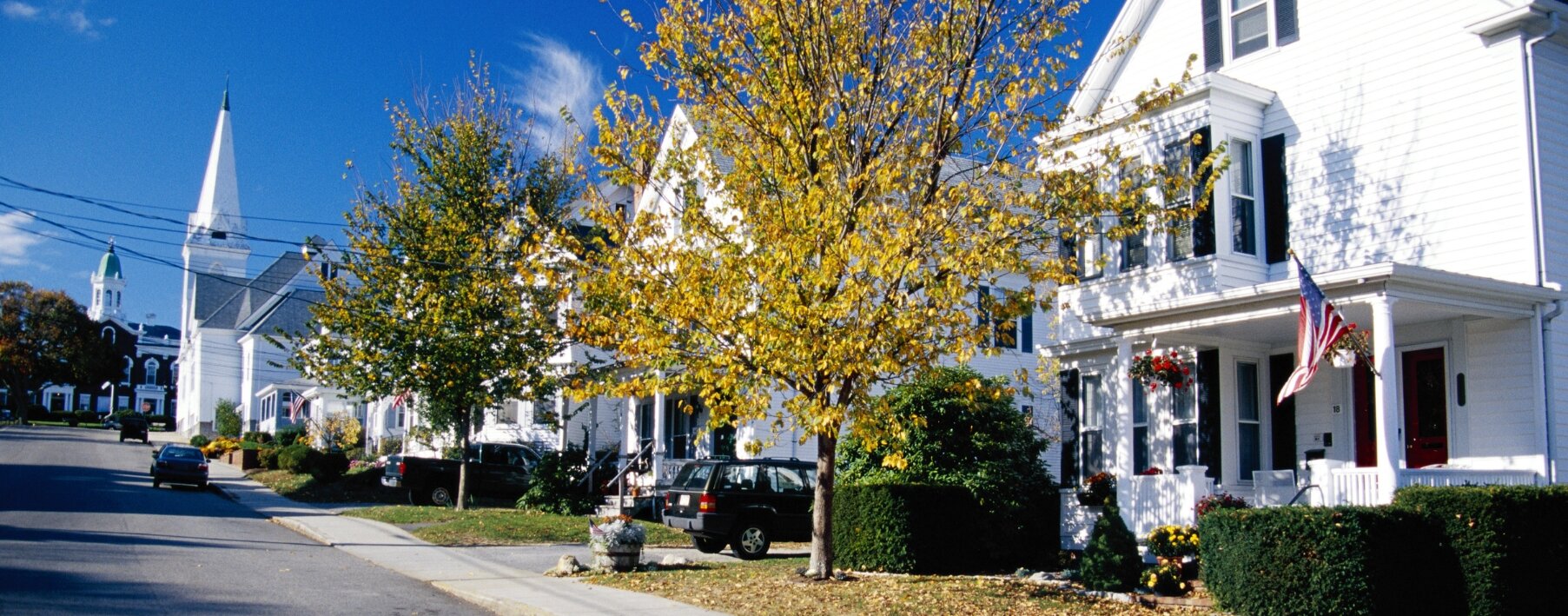Navigating Landlord Insurance in California: What's Covered?

Owning a rental property in California can be rewarding, but it also comes with unique risks—from earthquakes and wildfires to tenant disputes. That’s where landlord insurance in California comes in.
Landlord insurance is similar to homeowners insurance. It could help protect your investment, covering property damage, legal liabilities, and even lost rental income if your property becomes unlivable due to a covered event.
Whether you own a single-family home in Los Angeles, a duplex in Sacramento, or a coastal property near San Diego, having the right coverage can give you peace of mind while renting out your property.
Here’s what CA landlord insurance covers, how much it costs, and how to choose the best policy for your needs.
Key takeaways
- Landlord insurance in California covers property damage, liability, and lost rental income.
- The state doesn’t mandate landlord insurance in CA, but most lenders and property managers do.
- Shopping around can help you find the best landlord insurance in California at a competitive price.
Is landlord insurance required in California?
Legally, California doesn't require landlord insurance. However, most mortgage lenders will require it if you finance your rental property.
Even if it’s not mandatory, you should seriously consider landlord insurance if you’re a property owner. It protects your investment from costly risks like property damage, tenant lawsuits, and lost rental income.
Keep in mind that homeowners insurance in California only covers properties you live in—not those you rent out. If you rely on rental income, landlord insurance could help ensure you’re financially protected against unexpected issues like fires, water damage, or tenant-related claims.
How much is landlord insurance in California?
A landlord insurance policy in California costs around 25% more than a home insurance policy for the same property. If the average cost of home insurance in California is $1,405* per year, according to Insurance.com, the average landlord insurance is around $1,756.
Because California is prone to wildfires, earthquakes, and other natural disasters, premiums can be higher in specific areas.
Let’s take a closer look at how landlord insurance costs vary by region:
Landlord insurance cost in Los Angeles, CA
In Los Angeles, California, landlord insurance averages around $2,005 per year, given that the average home insurance policy costs $1,604*. This higher rate comes from the city’s expensive real estate market, earthquake risks, and high population density, which increases liability exposure.
Landlord insurance cost in San Francisco Bay Area, CA
Rental property insurance in California’s Bay Area averages $1,460* annually, driven by sky-high property values and proximity to fault lines. Earthquake insurance is highly recommended here due to the area’s seismic activity.
Landlord insurance cost in Sacramento, CA
Sacramento’s average annual premium is roughly $1,524* for rental property insurance coverage. While not directly in a wildfire zone, properties near forested areas or rural outskirts may see higher rates due to wildfire risks.
Landlord insurance cost in San Diego, CA
Landlords in San Diego typically pay about $1,639* per year. The city’s coastal location can drive up premiums, though its mild climate means fewer wildfire risks compared to inland areas.
Landlord insurance cost in San Jose, CA
Landlord insurance in San Jose, California, is approximately $1,379* annually. With a generally milder climate, properties here often have lower insurance rates compared to other parts of California.
Types of California landlord insurance coverage
Landlord insurance in California comprises several types of coverage that all work together to protect your rental property and finances. A typical policy might include these landlord insurance coverage options:
- Property damage coverage. Covers damage from events like wildfires, windstorms, and vandalism. If a wildfire near Lake Tahoe scorches your rental’s roof or a storm knocks out power, this coverage could help pay for repairs or even a full rebuild.
- Liability protection. If a tenant or visitor gets injured on your property—whether from a slip on wet tile in Los Angeles or a loose step in a Sacramento duplex—liability coverage could help with legal fees, medical bills, and settlements.
- Loss of rental income. If a fire or another covered disaster makes your rental unlivable, this coverage could reimburse you for lost rent while repairs are underway. This coverage could prove crucial for landlords in high-rent cities like San Francisco or San Diego, where even one missed month can be costly.
- Landlord contents coverage. If you rent out a furnished unit or keep maintenance equipment like lawnmowers or gardening tools on-site, this coverage could help pay for repairs or replacements after a covered event like theft or water damage.
- Water backup coverage. Older California properties often have aging plumbing, especially in cities like Los Angeles or Oakland. Water backup coverage could help pay for damage caused by backed-up drains or overflowing sump pumps—issues standard policies don’t usually cover.
- Building code coverage. If your rental home in a historic area like Pasadena or Berkeley needs updates to comply with modern building codes after damage, this coverage could help cover the costs. California’s strict building codes can make this a valuable policy add-on.
California landlord insurance coverage exclusions
While California rental property insurance covers many risks, some damages and events are typically excluded from standard policies. Here’s what’s not generally covered:
- Flood damage. Standard landlord insurance doesn’t cover flooding, even in flood-prone areas like California’s Central Valley or neighborhoods near the Sacramento River. You’ll need separate flood insurance to stay protected.
- Earthquake damage. Most landlord insurance policies don’t include earthquake coverage, even though California sits on major fault lines. Consider purchasing earthquake insurance, especially if your property is in a high-risk area like Los Angeles or the Bay Area.
- Tenant property damage. Your tenants’ personal belongings aren’t covered. Tenants should purchase renters insurance to protect items like furniture, electronics, and clothing from fire, theft, or water damage.
- Maintenance issues. Landlords are responsible for fixing wear and tear, like leaky faucets, aging roofs, or outdated wiring. Insurance only covers sudden and accidental damage, not routine maintenance.
- Intentional damage or vandalism by tenants. If a tenant deliberately damages your property, standard landlord insurance won’t cover repairs. Consider adding a vandalism endorsement for extra protection.
- Pest infestations. Damage caused by termites, rodents, or other pests is excluded. Preventative pest control can help avoid costly repairs down the line.
How to lower your California landlord insurance premium
Reducing your landlord insurance cost in California doesn’t have to mean sacrificing coverage. Here are actionable tips to help lower your premiums while keeping your rental property protected:
- Compare multiple quotes. Rates can vary based on location—especially in wildfire-prone areas like Napa Valley or earthquake zones in Los Angeles. Comparing multiple providers can help you find the best landlord insurance California quote for your property.
- Bundle your policies. Many insurance companies in California offer savings when you bundle landlord insurance with home, auto, or even umbrella coverage.
- Upgrade your property. In fire-risk areas like the Sierra foothills, consider installing fire-resistant siding, a metal roof, or updated plumbing to reduce damage risks and insurance costs.
- Add smart security features. Homes in urban hubs like San Francisco or Sacramento can benefit from security cameras, smart locks, or water leak sensors—all of which may qualify for discounts.
- Screen tenants carefully. Renting to responsible tenants lowers the likelihood of costly claims. Conduct background checks and ask for references before signing a lease.
- Raise your deductible. If you can afford a higher deductible, raising it will lower your monthly premium. Just be sure you have enough savings to cover it in case of a major claim.
- Stay claims-free. California’s wildfire and flood risks can lead to frequent claims. Covering minor repairs out of pocket can help keep your insurance rates from rising.
Still have questions?
Interested in learning more about insurance for landlords in California? Here are answers to some frequently asked questions to help you better understand your coverage options:
Who writes landlord insurance in California?
Many national and local insurance providers offer landlord insurance in California. To find the best coverage, compare quotes from different companies to see which one offers the right protection at the best price.
Does landlord insurance cover eviction in California?
Standard landlord insurance policies don’t cover eviction-related expenses, such as legal fees or lost rent during eviction proceedings. You may want to explore rent guarantee insurance or legal expense coverage if you’re concerned about eviction costs.
Can a landlord in California require renters insurance?
Yes, landlords in California can require tenants to carry renters insurance as a lease condition—and you should! This helps protect tenants’ personal belongings and can reduce disputes over liability if accidents occur on the property.
Who regulates landlords in California?
Landlords in California are regulated by several agencies. For instance, the California Civil Rights Department regulates fair housing laws, while the Department of Justice Attorney General’s Office handles landlord and tenant issues. The Tenant Protection Act of 2019 helps regulate increases in rent prices.
What factors influence the price of landlord insurance in California?
Several factors determine the cost of landlord insurance in California, including the property’s location, age, and size. Homes near wildfire-prone areas or high-crime areas typically have higher premiums. Other factors include the type of coverage, policy limits, claims history, and the home’s security features.



